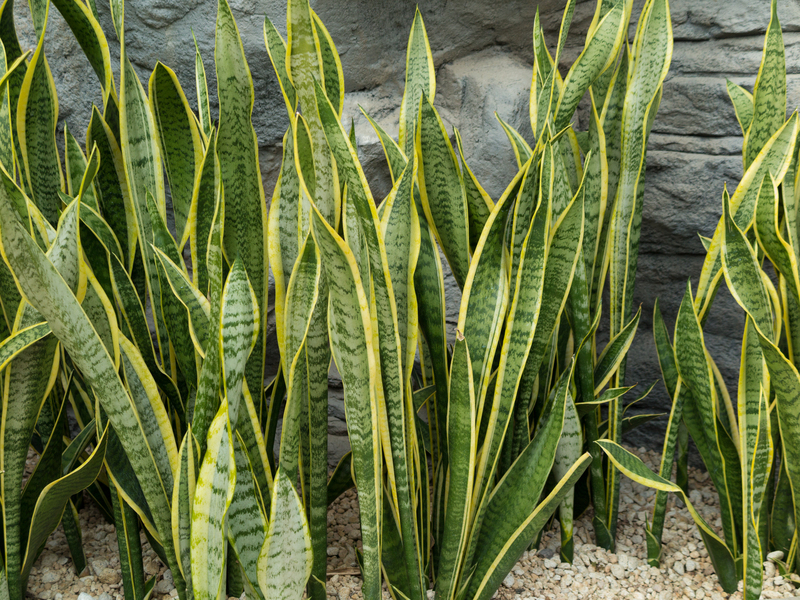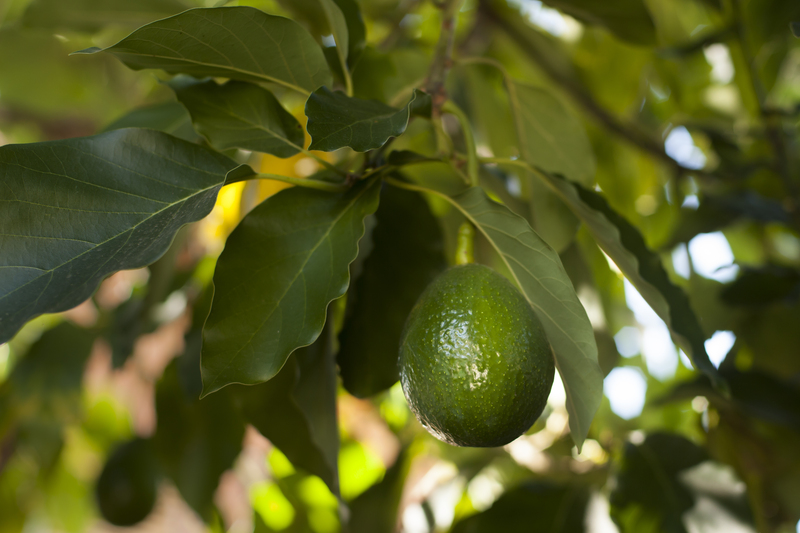Growing a Safe and Adventurous Yard for Kids
Posted on 15/06/2025
Growing a Safe and Adventurous Yard for Kids: Balancing Fun and Security
Are you ready to transform your outdoor space into a children's wonderland? Growing a safe and adventurous yard for kids is one of the most rewarding projects a family can undertake. Not only does it encourage healthy outdoor play, but it also fosters imagination, resilience, and lifelong memories. In this guide, you'll discover how to create exciting and secure play areas that spark creativity while giving you peace of mind.

Why Create an Adventurous and Safe Yard for Children?
Child development experts agree: Outdoor play is vital for physical, emotional, and cognitive growth. By designing an adventurous yet safe yard, you offer kids:
- Freedom to explore: Enables imagination and leadership.
- Physical fitness: Promotes balance, strength, and coordination.
- Social skills: Fosters cooperation and communication among peers.
- A connection to nature: Builds appreciation for the outdoors.
- Risk management abilities: Teaches them to navigate safe challenges.
But, how do you grow a secure but stimulating yard for your children? This article guides you step-by-step to design a playful landscape with both adventure and safety in mind.
Step 1: Assess Your Yard's Potential and Hazards
Before installing exciting play features, take stock of your outdoor area. Consider:
- Size and Shape: Determine open space and natural boundaries.
- Terrain: Notice any slopes, dips, rocks, or uneven ground.
- Sunlight and Shade: Identify areas of direct sun and adequate shade for play comfort and safety.
- Existing Features: Catalog trees, fences, gardens, patios, and storage sheds.
Pro Tip: Involve your kids in the initial walk-around to understand what excites and interests them!
Spotting Safety Hazards
An adventurous backyard should not come at the cost of safety. Look for these common hazards:
- Pools and water features (ensure fencing and safety covers)
- Poisons, pesticides, or unknown plants
- Sharp tools, loose bricks, sticks, and debris
- Gaps in fencing or open gates
- Overhead electrical wires or low branches
Remove, secure, or fence off such dangers before adding play equipment or landscaping.
Step 2: Plan Adventurous Play Zones
Outdoor play should thrill and challenge children while minimizing serious risks. To grow a safe and stimulating play yard, divide your space into specific zones:
- Active Play Zone: For climbing, swinging, sports, running, and jumping.
- Imaginative Play Zone: Includes sandboxes, playhouses, mud kitchens, or fairy gardens.
- Quiet Zone: Hammocks, shady reading nooks, or picnic spots for relaxation.
- Nature Exploration Zone: Mini flower beds, bug hotels, or wildlife observation areas.
Use landscaping, borders, and paths to mark each section, ensuring clear sightlines for adult supervision. This also helps teach children about boundaries and respect for different activities.
Designing a Multi-Age Play Space
If you have kids of different ages or frequently host playdates, consider:
- Grouping equipment by age suitability.
- Providing graduated challenges (small slide for toddlers, climbing wall for older kids).
- Supervising younger and mixed-age kids carefully in shared spaces.
Labels or fun decorations can help little ones recognize their zones!
Step 3: Selecting Safe and Durable Play Equipment
When building your backyard adventure zone, prioritize equipment with safety certifications and age recommendations. For every piece you consider, check:
- Sturdy construction: Select wood treated for outdoor use or UV-resistant plastics.
- Rounded edges and secure fastenings: Minimize pinches, scrapes, or splinters.
- Anchoring: Stakes or footings ensure structures won't tip over.
- Proper Sizing: Choose set sizes suitable for the intended age group.
Some adventurous but safe ideas:
- Climbing walls with soft crash mats.
- Balance beams close to the ground.
- Tree swings hung from strong, healthy branches, with wide clearance.
- Trampolines equipped with safety nets and padding.
- Zip lines or rope courses with harness systems for older kids.
_**Always follow manufacturer instructions and maintain your equipment regularly for maximum security.**_
Step 4: Choose Child-Friendly Landscaping and Materials
A truly safe and adventurous yard uses the right landscaping to minimize injury and enhance sensory play. Keep these tips in mind:
Soft Ground Covering
- Rubber mulch, engineered wood chips, or artificial turf under all climbing equipment.
- Grass is suitable, but may become uneven or slippery when wet.
- Sand or pea gravel can cushion falls but require regular raking and sifting for debris.
Kid-Safe Plants and Gardens
- Avoid toxic plants. Teach children not to eat any plant parts unless you identify and teach them.
- Use non-thorny, non-allergenic varieties for hedges and borders.
- Herb or sensory gardens (lavender, mint, basil) offer hands-on adventure and learning.
Gardening together is a fantastic way to bond and encourage a love for the outdoors.
Step 5: Encourage Adventure with Natural Features
You don't have to spend a fortune on commercial playgrounds. Nature itself offers the ultimate play experience! Consider adding:
- Logs or stumps for stepping, balancing, and group games.
- Boulders safely sunken into the ground for climbing or creative play.
- Living willow tunnels or playhouses for shaded hideaways.
- Mini streams or ponds (with constant supervision and fencing).
Natural play elements encourage problem-solving, creativity, and interactive play in a way plastic equipment cannot. Let your yard change through the seasons for year-round excitement!
Step 6: Set Boundaries and Supervise Smartly
Even the most thoughtfully designed secure and adventurous yard needs rules and vigilance to stay safe.
- Install fencing or hedges to keep children safely inside and out of street view.
- Set clear rules about equipment use, and model safe behavior (no pushing or rushing).
- Rotate play areas or introduce new features periodically to keep things fresh--and remove aging or broken elements promptly.
- Maintain sightlines from the home or patio--you should be able to see all play zones at a glance.
Consider posting playful yard rules signs as fun reminders for kids and visitors.
When to Involve Adults
- Supervise water activities at all times
- Help children learn how to take safe risks and recover from mistakes
- Participate in play--it's an excellent way for families to bond and for children to model healthy risk-taking
Step 7: Keep Your Yard Play-Ready Through Maintenance
A well-maintained yard is always the safest and most fun. Schedule regular checks to:
- Inspect play structures for damage or loosened fittings
- Rake surfaces and replenish mulch or soft materials as needed
- Check for debris, insect nests, or overgrown plants
- Clear walkways and paths of tripping hazards
- Wash or sanitize communal toys or water tables regularly
Enlist children's help with age-appropriate tasks--a great way to teach responsibility and take pride in their space.
Creative Ideas for an Adventurous Kids' Backyard
Whether you have a sprawling lawn or a compact courtyard, you can always foster adventure in a safe way. Try these inspiring play features:
- Treasure hunt obstacles: Hide clues or natural "treasures" to encourage exploration.
- Mud kitchens: A hit with creative kids--think old pots and pans, water jugs, and a patch of dirt.
- DIY fort building: Use hammocks, sheets, and clips for ever-changing secret spaces.
- Chalkboard walls or easels: Creative, mess-free fun for artists of all ages.
- Bounce paths: Place stepping stones on springy turf or foam for imaginative play.
The best adventurous yards often combine store-bought items, natural elements, and homemade play structures for variety and excitement.
Learning Opportunities in Your Child-Friendly Yard
Growing a kid-safe and adventurous backyard goes beyond just physical activity. It's a space for children to learn about:
- Gardening: From seeds to harvest, see nature up close.
- Wildlife: Observe birds, insects, and small animals responsibly.
- STEM challenges: Build forts, test homemade seesaws, or design obstacle courses.
- Art and creativity: Paint rocks, make nature crafts, or write stories inspired by their yard adventures.
A vibrant yard teaches resourcefulness, patience, and curiosity--a foundation for life-long learning.

Common Questions: Cultivating a Safe and Adventurous Kids' Yard
1. How do you balance safety and adventure in a child's backyard?
Supervision, smart design, and regular maintenance! Encourage risk-taking within sensible boundaries, prioritizing soft landings, sturdy structures, and natural exploration.
2. What are poisonous plants to avoid in a kid's play yard?
Be wary of oleander, foxglove, lily of the valley, daffodils, and mistletoe. Research local plants and consult your nursery if unsure.
3. How often should you inspect your play area?
Do a quick sweep before each play session and a thorough check monthly for wear, hazards, and plant overgrowth. Seasonal deep cleans and repairs keep your play zone in top shape.
4. How do you keep a yard fun year-round?
Switch up play areas, introduce seasonal features (like a splash pad in summer or fort-building contest in winter), and keep natural exploration central to fun.
Conclusion: Growing Smiles and Confidence Outdoors
Cultivating a safe and adventurous yard for your kids means more than preventing accidents--it's about empowering children to explore, create, and learn at their own pace. By blending secure play zones, natural features, thoughtful landscaping, and regular care, you'll foster a love of the outdoors that lasts a lifetime.
Take the first step today--survey your yard, dream big with your children, and start growing a backyard filled with adventure, safety, and joy!

